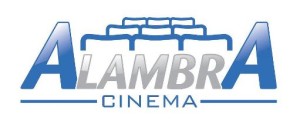Author: Rex Fowler
No television teams or reporters had been summer that is there last a local credit union exposed a unique branch on North Main Street in Hartford’s northeast neighborhood. But make no error, this is certainly one of 2015’s biggest victories when it comes to Capital City, and another who has more potential to make the tide for financially-strapped, north-end residents than just about any ballpark, resort, or casino that could garner headlines in the front pages or generate buzz on social media marketing.
The Hartford Municipal worker’s Federal Credit Union (and also you thought Yard Goats ended up being a name that is tough swallow) moved in to a vacant building which had formerly offered as a branch for starters of America’s biggest banking institutions.
perhaps not that sometime ago there have been four bank branches when you look at the three densely populated north-end neighborhoods that now constitute the newly designated “Promise Zone” (the communities are Northeast, Clay Arsenal, and top Albany). In modern times three associated with the four branches have quietly closed their doorways, making the 24,000 residents into the Promise Zone in just what’s now called a “banking wilderness” (maybe not coincidentally three check-cashing shops have actually exposed when you look at the Promise Zone during approximately exactly the same schedule). Plus in the north end, where significantly more than a third of residents do not have their particular cars and a significant portion don’t have the technical capability to participate in online banking, usage of a nearby standard bank still matters.
The corporation that is national Enterprise Development (CFED) estimates that 21 % of Hartford households do not have records with any bank or credit union (statewide, just about 5 % of residents are unbanked). In addition, CFED’s analysis suggested that another 24 % of Hartford households are “underbanked,” meaning they will have a merchant account, but continue steadily to depend on alternate services that are financial check-cashing services, pay day loans (illegal in Connecticut, but easily available online), rent-to-own agreements, and pawn stores. What exactly is the price of these types of services? The fees for using a check-cashing service can add up to one whole year’s worth of wages over the course of a typical north-end resident’s working life. Rent-to-own agreements charge interest at prices of 98 per cent and greater. And online pay day loans are offered at prices more than 1,000 per cent.
Therefore with 45 per cent of your households either unbanked or underbanked, so how exactly does Hartford compare with other urban centers in brand new England? Hartford Community Loan Fund looked over CFED information for brand new England’s 30 biggest urban centers. No town had an increased percentage of unbanked and households that are underbanked Hartford (the closest in Connecticut ended up being Bridgeport at 37 per cent). In reality, of most U.S. towns over 100,000 residents, HCLF analysis discovered just a number of municipalities whoever residents had been more disconnected from banking institutions and credit unions — and also the more credit that is affordable generally made available from these organizations — than Hartford (for large urban centers, hard-hit Detroit topped the list at 49 %).
To create matters more serious, the last 3 years have observed the hinged doorways completely closed at Hartford’s two biggest providers of financial literacy and credit guidance solutions, Co-Opportunity and HART — two organizations that frequently made connections between banking institutions or credit unions in addition to town’s low-wealth residents. Therefore it is not surprising that do not only are a substantial amount of our residents unbanked or underbanked, but in regards to the percentage that is same (45 %) report fico scores below the 620 cutoff needed for access to simply and affordable credit services and products (into the Promise Zone it’s 55 % with scores below 620; in Hartford’s downtown, nonetheless, just 7 %).
Analysis has shown that communities that develop and nurture a good monetary solutions infrastructure are more inclined to develop economically stable and households that are empowered. Just what would such an infrastructure appear to be? Healthier and available banking institutions and credit unions, robust and effective education that is financial empowerment solutions, including homeownership guidance, and lower-cost providers of alternate items like those provided by payday loans Mississippi mission-oriented loan providers like community development banking institutions. And also to work, the ongoing solutions should be culturally highly relevant to the residents in the neighborhood.

